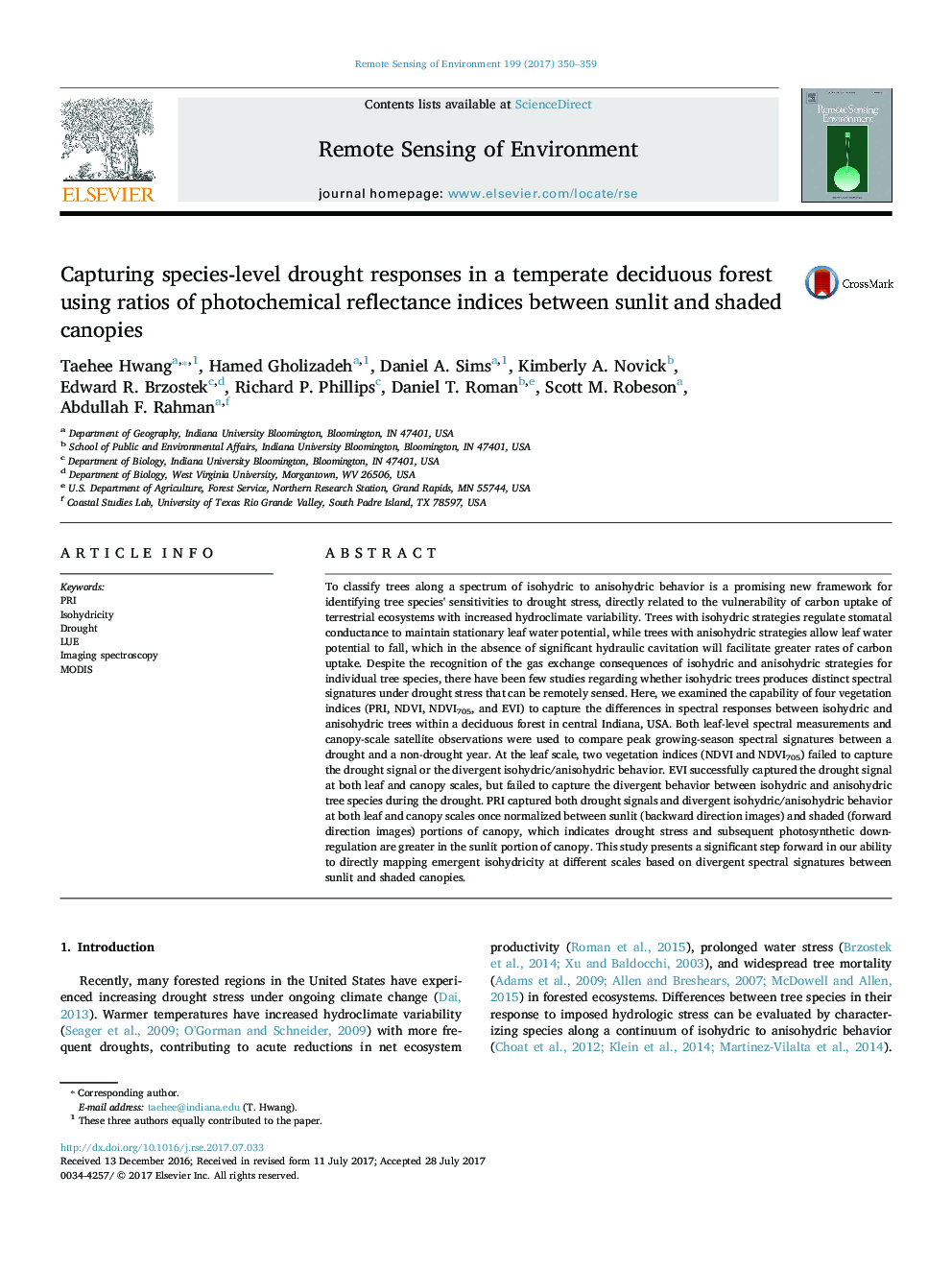| کد مقاله | کد نشریه | سال انتشار | مقاله انگلیسی | نسخه تمام متن |
|---|---|---|---|---|
| 5754853 | 1621201 | 2017 | 10 صفحه PDF | دانلود رایگان |
عنوان انگلیسی مقاله ISI
Capturing species-level drought responses in a temperate deciduous forest using ratios of photochemical reflectance indices between sunlit and shaded canopies
ترجمه فارسی عنوان
گرفتن پاسخ های خشکسالی در سطح گونه در جنگل های با برگ های معتدل با استفاده از نسبت شاخص های بازتابنده فتوشیمیایی بین سایبان های خورشیدی و سایه
دانلود مقاله + سفارش ترجمه
دانلود مقاله ISI انگلیسی
رایگان برای ایرانیان
کلمات کلیدی
موضوعات مرتبط
مهندسی و علوم پایه
علوم زمین و سیارات
کامپیوتر در علوم زمین
چکیده انگلیسی
To classify trees along a spectrum of isohydric to anisohydric behavior is a promising new framework for identifying tree species' sensitivities to drought stress, directly related to the vulnerability of carbon uptake of terrestrial ecosystems with increased hydroclimate variability. Trees with isohydric strategies regulate stomatal conductance to maintain stationary leaf water potential, while trees with anisohydric strategies allow leaf water potential to fall, which in the absence of significant hydraulic cavitation will facilitate greater rates of carbon uptake. Despite the recognition of the gas exchange consequences of isohydric and anisohydric strategies for individual tree species, there have been few studies regarding whether isohydric trees produces distinct spectral signatures under drought stress that can be remotely sensed. Here, we examined the capability of four vegetation indices (PRI, NDVI, NDVI705, and EVI) to capture the differences in spectral responses between isohydric and anisohydric trees within a deciduous forest in central Indiana, USA. Both leaf-level spectral measurements and canopy-scale satellite observations were used to compare peak growing-season spectral signatures between a drought and a non-drought year. At the leaf scale, two vegetation indices (NDVI and NDVI705) failed to capture the drought signal or the divergent isohydric/anisohydric behavior. EVI successfully captured the drought signal at both leaf and canopy scales, but failed to capture the divergent behavior between isohydric and anisohydric tree species during the drought. PRI captured both drought signals and divergent isohydric/anisohydric behavior at both leaf and canopy scales once normalized between sunlit (backward direction images) and shaded (forward direction images) portions of canopy, which indicates drought stress and subsequent photosynthetic downregulation are greater in the sunlit portion of canopy. This study presents a significant step forward in our ability to directly mapping emergent isohydricity at different scales based on divergent spectral signatures between sunlit and shaded canopies.
ناشر
Database: Elsevier - ScienceDirect (ساینس دایرکت)
Journal: Remote Sensing of Environment - Volume 199, 15 September 2017, Pages 350-359
Journal: Remote Sensing of Environment - Volume 199, 15 September 2017, Pages 350-359
نویسندگان
Taehee Hwang, Hamed Gholizadeh, Daniel A. Sims, Kimberly A. Novick, Edward R. Brzostek, Richard P. Phillips, Daniel T. Roman, Scott M. Robeson, Abdullah F. Rahman,
